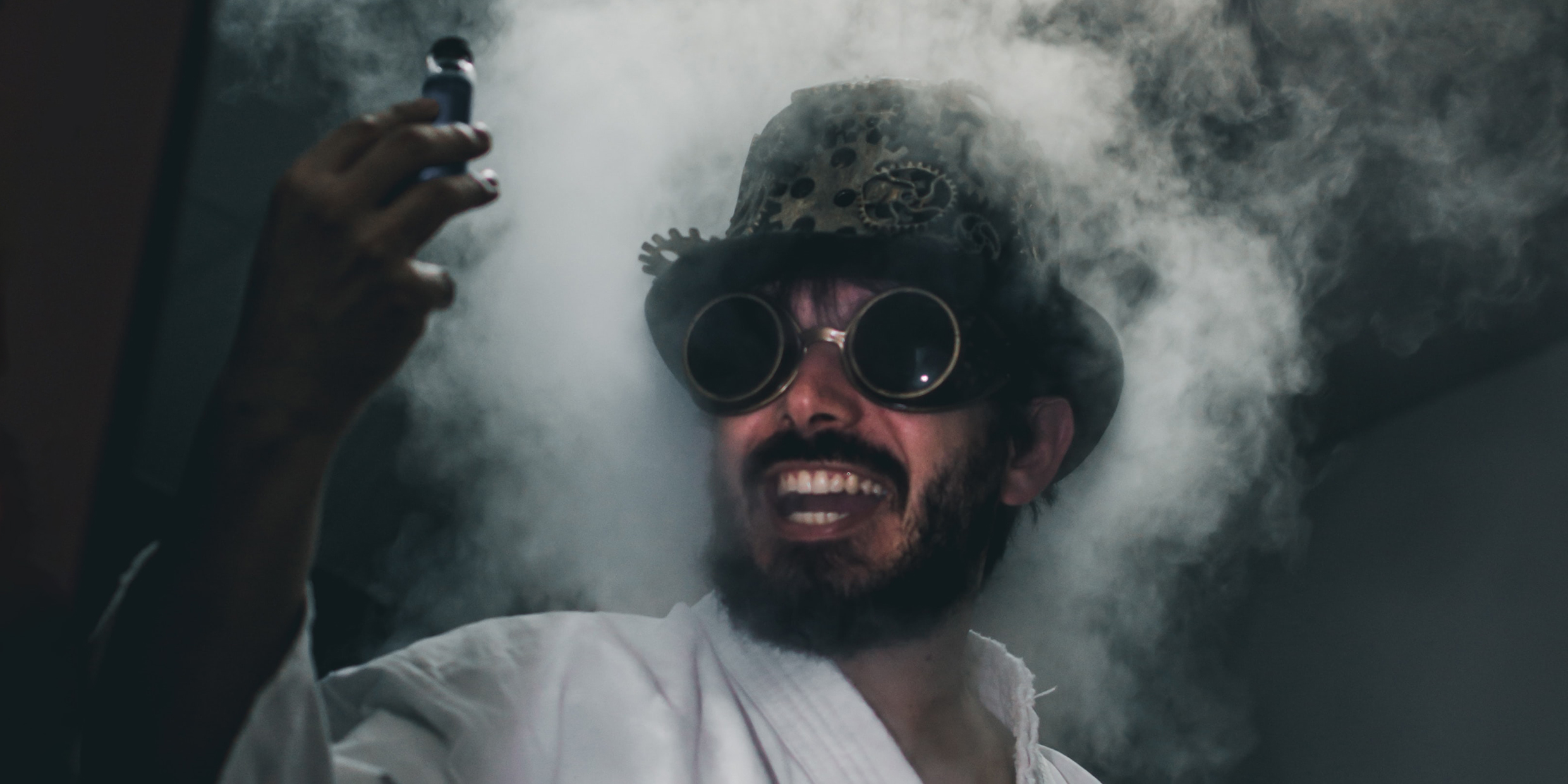Originally published 1 April 2003
RAYMO: My guest today is Dr. Sivana, the Mad Scientist. Sivana is not really a mad scientist, but he plays one on TV…
SIVANA: When I can get the work.
RAYMO: …when he can get the work. Tell me, Dr. Sivana, is it true there’s not much call these days for an actor with your specialty?
SIVANA: When was the last time you saw a mad scientist in a film, or comic book, or on TV? The glory days of the mad scientist are past.
RAYMO: So, when were the glory days?
SIVANA: Well, of course, the tradition goes back to the granddaddy of all mad scientists, the Baron Frankenstein.
RAYMO: A solitary genius who tinkers with forces of nature that go wildly out of control.
SIVANA: That’s right. Frankenstein established the theme that defines the genre. But things didn’t really get going until the mid-20th century. The glory days of my career were the 1950s. Think of such classic Hollywood mad scientists as Dr. Carrington in The Thing and André in The Fly.
RAYMO: André, of course, had the best of intentions. He hoped that his invention — a matter transporter — would solve the world’s problems. Move surplus food instantly from place to place, that sort of thing.
SIVANA: Not all mad scientists are evil. In fact, some of the best riffs on the genre are geniuses who hope to do good, but bring the house down on their heads instead.
RAYMO: I remember what André’s pretty wife said when her husband proposed to test his transporter on himself: “I get so scared sometimes. The suddenness of our age. Electronics. Rockets. Earth satellites. Supersonic flight. And now this.”
SIVANA: And you remember what André said after he failed to notice the fly in his transporter box and inadvertently turned himself into an insect: “There are things a man should never experiment with.”
RAYMO: Too late.
SIVANA: Too late, indeed.
RAYMO: You’d think that with genetic engineering so much in the news — with all of the possibilities of mischief — there’d be lots of calls from Hollywood for an actor who can play a mad scientist.
SIVANA: You’d think so, yes. But it seems that people don’t want fantasy. They want documentaries. It has something to do with a change in public attitudes. Back in the 1950s, scientists were generally admired: Think of Albert Einstein and Jonas Salk, Rachel Carson and James Watson. The mad scientist stood out as a thrilling aberration. Today, no one thinks highly of scientists. There are no scientist heroes.
RAYMO: Are you suggesting that since all scientists are now perceived as somewhat mad, the mad scientist is irrelevant?
SIVANA: Exactly. The reality has caught up with the fantasy. Who needs a mad scientist when you have thousands of white-coats in university and industry laboratories grafting human ears onto the backs of mice and putting luminescence genes from jellyfish into baby monkeys.
RAYMO: And what about the physicists? Not long ago there was a bit of a stir about an experiment with a high-energy accelerator — the Heavy Ion Collider on Long Island — that some people thought might produce a tiny black hole that then would slowly suck the whole Earth into it. That sounds like a movie plot.
SIVANA: In fact, we shopped that one around Hollywood. No one would touch it. Banal, said one producer. That was his exact word.
RAYMO: We’ve come to a pretty pass when the end of the world is banal.
SIVANA: Faceless lab coats with staggering power, often doing experiments for no other reason than that they can be done. It seems to me it’s time for a new genre — the sane scientist — the scientist who stops and asks, “Why are we doing this?” “What sorts of work will best advance the public good?”
RAYMO: You seem to have a low opinion of scientists. It’s my impression that almost all scientists are well-meaning, even altruistic.
SIVANA: Hey, don’t blame me if scientists have an image problem. I would love to see science again held in high esteem. Then maybe there’d be a call for a few mad scientists. I need the work.



